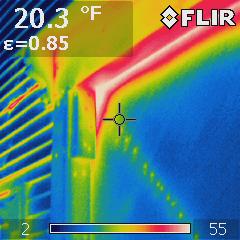Our Services

High Performance HVAC Design
Buildings requiring the utmost level of comfort need a properly designed HVAC system. This service requires an understanding of the client’s expectations and comprehension of the building’s site limitations and thermal envelope in order to develop a load calculation and discuss HVAC options. Through the integrated design approach, HVAC systems are vetted and selected for the design, culminating in a set of Construction Document (CD) drawings that can be used for proper installation. TE2 is often hired to also provide construction administration services where we can answer questions related to the installation, and perform periodic site visits.

MEP/FP Design
This service is for all buildings requiring mechanical (HVAC), electrical, plumbing and fire protection (MEP/FP) design. Our MEP/FP design capabilities are vast, from high end residential compounds to data centers. We utilize the latest BIM software including AutoCAD and Revit. Comfortable, quiet, reliable and cost-effective systems are what we pride ourselves on providing to our clients.

Renewable Energy Design
Federal and state tax credits combined with high utility prices make renewable energy systems as viable as ever before. This client’s expectations, energy usage and a site feasibility are used to identify the right energy source to meet the goals of the client. We have a vast amount of experience with renewable energy sources, including geothermal (ground source heat pumps), solar electric (photovoltaic), solar thermal, wind and biomass energy.

Building Energy Analysis
How is my building performing, and what can I do to make it perform better? This service analyzes all aspects of the building’s energy use and construction details to identify energy conservation measures (ECM’s) and detect system deficiencies. We use an assortment of tools and software such as energy modeling software programs (EQuest, Elite, Wrightsoft, etc) that allow us to evaluate the energy loads for a building, and compare them to other similar buildings in our database. Equipment such as data loggers, current transducers, CO2 sensors, infrared cameras and blower door tests are some of the equipment that allow us to make informed recommendations on how to effectively lower building energy use.
